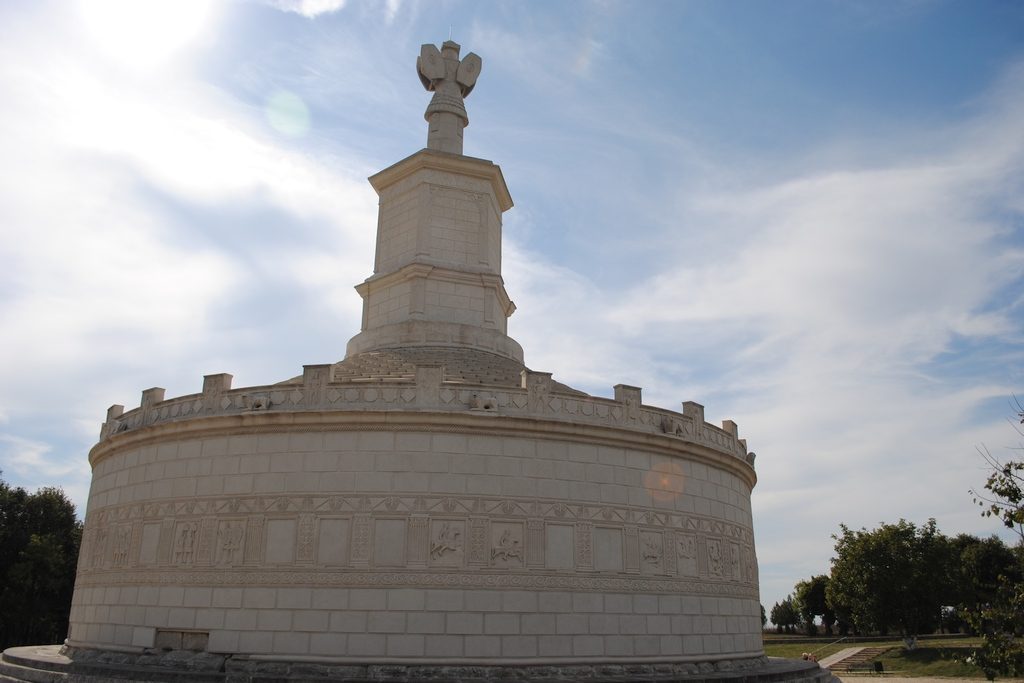

Tropaeum Traiani is one of the most important ancient monuments from the Romanian territory. The first diggings were undertaken starting with the year 1882 by Grigore Tocilescu.
The monument, in the version in which it has been reconstituted by the archeologists, is composed of a cylindrical pedestal, which has at the base numerous rows of circular steps, and at the superior part, a conical roof, with scales on the stone concentric rows, from the middle of which it raises the hexagonal supra-structure.
On the superior part there is situated the bifacial trophy, with a height of 10, 75 m, representing an armor with four cylindrical shields. At the base of the trophy there are two statuary groups which each contain the representation of the bodies of three captives.
The height of the monument together with the trophy is approximately equal with the base diameter, namely approximately 40 m.
Round and around, the 54 metopes of limestone of Deleni, describing in bas-relief war scenes. The metopes were rectangular plates with a height of 1, 48 – 1, 49 m. Of the 54 initial metopes, there are still kept 48.
Over the metopes there is situated a border with 26 battlements, of which there were kept only 23, also sculpted in bas-relief, which form the crowning of the circular core.
In the superior part, there is found the bifacial trophy, which describes armor with four cylindrical shields. This is, actually, a trunk covered in a classic armor, with fighting weapons, at whose feet there are also situated weapons. On the base of the trophy, there are situated two statuary groups, each one containing the representation of the bodies of three captives.
On one of the sides of the cylindrical centre was unraveled an inscription from which it would result the fact that the monument is surrendered to the “God Mars the Warrior” by “Nerva Traian August, emperor and Caesar, winner against the Germans and the Dacians, the son of the divine Nerva, great priest, for the XIIIth time tribune, for the VIth time emperor, for the Vth time consul, father of the homeland.”
The ensemble, which was part of the monument, also comprised a funeral altar, on whose wall there are registered the names of approximately 3.800 Roman soldiers who fell, probably, during the fight of Adamclisi, and also, a mausoleum, with three concentric walls, in which there appears to be buried the commander (praefectus castrorum), who, with the price of his life, decided the victory from the year 102.
The origin of the monument from Adamclisi wasn’t unraveled clearly, because of the fact that throughout the time, the historians both associated it with Getic origins, either with Thracian origins, even Persians, and has situated the construction in time before our era, after the IVth century.
